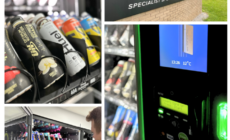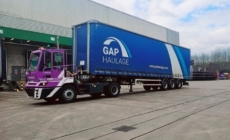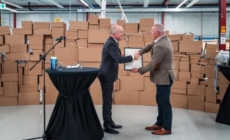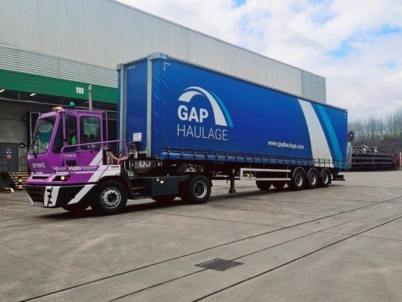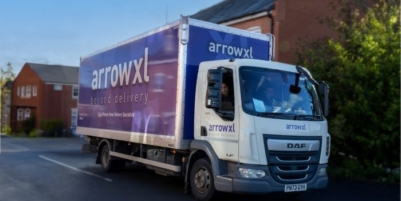-
Nutrivend selects Forterro’s Orderwise to support online expansion and streamline operations - April 11, 2025
-
ARROWXL LAUNCHES AMBITIOUS ZERO WASTE ROADMAP - April 8, 2025
-
THE BCMPA’S NEW CAMPAIGN DRIVES OUTSOURCING SUCCESS IN Q1 - April 7, 2025
-
BLACKOUT TECHNOLOGIES TARGETS TELEMATICS-INTEGRATED MOBILE DEVICE BLOCKING TO COMBAT SMARTPHONE DISTRACTION - April 1, 2025
-
Sparck Technologies awarded Royal designation - March 27, 2025
-
OpenADR Alliance announces first OpenADR 3.0 certified products with EVoke Systems, E.ON Energy and Universal Devices - March 25, 2025
-
Growing fulfilment and contract packer appoints new Managing Director - March 25, 2025
-
When is it time to invest in a WMS? Understanding the key trigger points - March 25, 2025
-
eCapital helps Vantage Recruitment on its journey to financial success - March 24, 2025
-
Hugo Beck Celebrates 70 Years of Packaging Innovation with Open House Events - March 20, 2025
For many companies, bringing in a Warehouse Management System WMS to replace very well entrenched, paper and spreadsheet-based processes can often be a big change. It is likely to affect workers, managers, customers, suppliers and any existing technology systems in place.
Workers may be accustomed to setting their own schedules for the day based on paper pick sheets whereas with a WMS, they will be assigned their tasks for the day. Suppliers or customers may be accustomed to a different style of paperwork or being able to circumvent routine systems to accelerate a shipment. This will be pre-scheduled with a WMS.
Existing technology may be in use that needs to be integrated with the WMS to maximise efficiency. For example, some warehouses have mechanical sorters and conveyors in place to deliver items to operatives on the packing bench and if this is left operating in isolation after a WMS is introduced, you will be missing out on many opportunities to tweak productivity levels.
The best way to ensure your WMS project delivers on all fronts is to follow a tried and tested approach to the implementation process.
This is why change management is such an important element of every WMS implementation and something to consider carefully when you select a software vendor. WMS roll outs will frequently share common characteristics, especially if they are in similar industry sectors. Having a consulting team that understands your industry and can manage the change with a sensitivity to your market specifics is a significant benefit, so we always advocate that companies search for a WMS vendor that has direct experience of working in your industry.
Best practice change management
When you engage Indigo Software to implement your WMS, we follow a proven, best practice approach to change management, following a well-honed process.
This begins with a Foundation stage, where we collectively select the best project team comprising our own technical consultants and supply chain specialists, plus key users within your organisation. We advocate having a range of internal champions including management and users, with a representative from each department that will be using the new WMS in one way or another. A typical project team will include representatives from warehouse operations, IT, finance, and human resources. Within the team, it is important to clearly define individual roles, including the project manager, change champion, communication lead, and training coordinator.
Once the project team is in place, we collectively plan implementation, mutually agreeing realistic timeframes to ensure you have ample opportunity to refine existing processes before they are automated. Our consultants work with many leading organisations, and bring a best practice eye to each project, helping you to get the very most out of your investment in a WMS.
Defining your WMS vision
The most important part of the Foundation phase involves defining your objectives. This needs to clearly articulate the goals and benefits of your WMS implementation, including your expectations for increased efficiency, better inventory management, improved accuracy and enhanced customer satisfaction. Part of the visioning process also includes outlining the different steps required to transition from your original (paper-based) operation to a future proofed, technology-controlled warehouse operation. The detailed plan generated will include timelines, milestones, resources needed, and key performance indicators (KPIs).
The foundation stage also includes a full review of all your existing hardware and software, after which we can make recommendations about whether you can use existing servers or should consider a hosted implementation. Wherever possible we will always advocate making use of existing technology investments, possibly with the addition of new rugged devices for automatic data capture.
Detailed project education
The next stage of the implementation focuses on Education, ensuring that everyone involved with the project fully understands each element of the planning and delivery process. This includes analysing how the implementation is likely to impact the organisation, from processes and job roles to future systems. We will help you to outline the steps required to transition from the current state to the future state. This plan will include timelines, milestones, resources needed, and KPIs. During any user acceptance trialling we will provide collateral to help you in scenario testing and also provide an audit trail of what tests have been completed and how far through the UAT process you are.
We also work closely with users, helping them to become as familiar as possible with their new WMS software system in advance, identifying any customisation required and gauging likely training requirements. It is imperative that stakeholders are always kept well informed about the project, progress made, plus the benefits, and changes they can expect, across a broad range of communication channels.
Maintaining ‘business as usual’
Once you are ready for the implementation we work towards the Solution Delivery Phase, during which we plan for Pilot Testing, before we proceed to the Final Migration and System Cut Over. In the Pilot phase, we will test your WMS in a controlled environment and the feedback we obtain will inform any necessary adjustments to be made before the final rollout. During this final stage, your existing system is ‘shut down’ and use of the WMS begins. In some cases, we will run both systems concurrently (even if the original system is paper based), allowing you to identify any issues and also, to observe instant efficiency improvements you will benefit from in the future. Whichever approach is ultimately taken, we will be completing your roll out in carefully controlled phases, to ensure that any issues can be addressed with minimal disruption. Our goal is always zero impact on ‘business as usual’.
Although we conduct end user training throughout the implementation, once the system is live, we complete the final stages of end user training during the Solution Delivery Phase. Typically, users find our WMS software so intuitive and easy to use, training requirements are minimal.
The final Go Live phase involves us ensuring that you have maximum support to stay fully operational throughout the transition to WMS assisted working. We will establish a dedicated support team involving the supply chain consultants who worked on your implementation. They are available to assist your users both during and after the implementation. We will be continuously monitoring early feedback and ensuring that any issues are identified and resolved promptly.
Throughout every stage in the process, we employ mutually agreed KPIs to monitor your implementation’s progress and impact. Flexibility is key to a successful implementation and our consultants will regularly review these metrics to ensure the project stays on track.
What to expect when you implement Indigo WMS
Proven industry experience
Our team of consultants brings specialised expertise that will significantly enhance the operational efficiency and overall profitability of your business. Using their in-depth knowledge of warehouse operations, technology, and best practices, a WMS consultant will add value in the following key areas:
Process optimisation advice
Our consultants will analyse existing warehouse processes and identify inefficiencies and bottlenecks that are potentially holding the business back. They will then design and help you implement new streamlined workflows that maximise productivity, reduce errors, and minimize handling times. This leads to faster order processing and improved service levels.
Inventory management advice
Effective inventory management is crucial for reducing costs and meeting customer demands. As part of a WMS implementation project our consultants will help you implement advanced inventory tracking and management techniques, such as real-time data analytics, automated replenishments along with simple and enhanced multi order picking processes. All of these can effectively reduce excess inventory, help you minimise stock discrepancies, and improve cash flow.
Cost reduction review
By identifying areas where waste can be reduced, and resources can be utilised more efficiently our WMS consultants will help businesses lower operational costs. This will include optimising storage space, improving labour productivity through better task and resource management, and reducing the costs associated with errors and returns.
Scalability and flexibility review
As businesses grow, their warehouse operations must scale accordingly. Indigo Software’s consultants ensure that the warehouse management system is scalable and flexible enough to be able to accommodate growth and changes in your business models. This future-proofs the business against evolving market demands and technological advancements.
Compliance and risk management review
In today’s busy world navigating the complexities of regulatory compliance and risk management can be challenging. A WMS consultant ensures that warehouse operations adhere to relevant regulations and standards, such as health and safety protocols and environmental regulations. They also implement robust risk management strategies to mitigate potential disruptions.
Having successfully implemented numerous WMS solutions globally, your warehousing consultancy project is in a tried and tested, safe pair of hands, resulting in a smooth and efficient process. Indigo Software’s consultants have extensive real-world experience in a warehouse setting, ensuring a practical and business process focused solution, rather than just an IT led solution.
Implementing a WMS involves a not insignificant degree of effort on the part of the customer, but it will deliver outstanding business benefits that continue to achieve a financial return on investment for many years.
Our consultants have decades of experience between them and are ready to introduce automation into your warehouse.
Author
Eric Carter, Solutions Architect, Indigo Software


